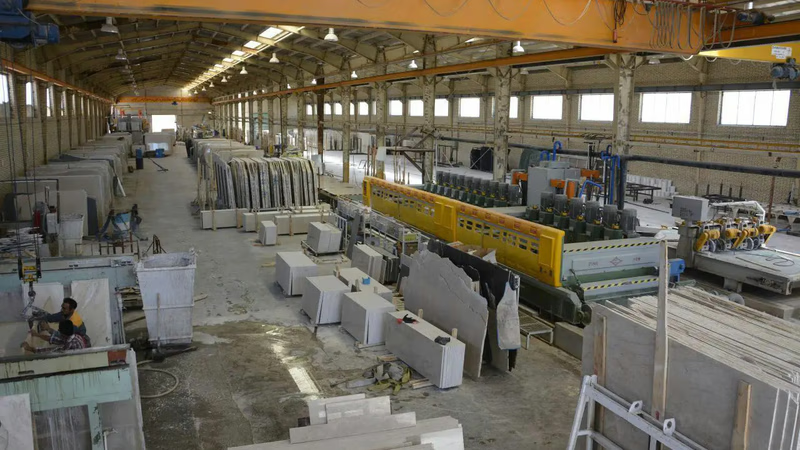
Diverse natural stones like marble and granite in the Middle East.
Marble is widely used in the Middle East for its elegance and beauty. It is a metamorphic rock with a smooth and polished surface, often featuring intricate patterns and veining. It is commonly used for flooring, countertops, wall cladding, and decorative elements. Granite is a durable and versatile natural stone that is popular for its strength and resistance to heat and scratches. It is commonly used for countertops, flooring, and exterior cladding, as well as for decorative purposes.
Limestone is a sedimentary rock that is widely available in the Middle East. It is often used for exterior cladding, as well as for flooring, wall tiles, and architectural details. Limestone comes in various colors and finishes, ranging from beige and cream to gray and blue. Travertine is a type of limestone that is characterized by its porous nature and unique texture. It is commonly used for flooring, wall cladding, and outdoor paving due to its ability to withstand weathering. Travertine is available in different colors, including beige, ivory, and walnut.
Among materials used in the manufacture of buildings in stone. Stones are a relic of thousands of years of pressure and heat of the earth's inner layers to lime and sediment. There are more than a hundred types of natural stone, but only a few types, in particular, can be used as building stones. The Middle East stone industry is nothing short of stone industry of Italy, China and India.
Statistics show that the Middle East is the fourth largest producer of building stone in the world after Italy, China and India. The world's building stone reserves reach about 15 billion tons, including granites, marbles, travertine and alabaster, among which, Iran has taken the world first place due to the variety of colors and quality of Iranian-made stones with 4.7 million tons of world reserves.
The Middle East has a high potential for a variety of decorative and building stones due to the diversity of geological events and obvious rock cleavage stones which has happened as a result of the low forest cover and soils. One of the God-given advantages of the stone industry in the Middle East is the diversity of its mines. The stone mines include granite, marble, porcelain, crystal, travertine and alabaster, which also have high color varieties.
Now there are 8 thousand and 800 colored metals mines, industrial soils as well as building stones and stone facade in Iran, among which 1900 mines are allocated to decorative stones. The known capacity of Iran's mines is estimated at 47 billion tons, of which about 4 billion tons are related to decorative stone reserves.
The value of construction projects in the six Gulf Arab states, plus Iran and Iraq, will reach more than $ 697 billion over the next 10 years, according to figures from MEED magazine. Among these, if only the cost of building stones is 5% of this financial volume, for the next decade, there will be about $ 34.85 billion per year in the consumption field.
Turkey exported $ 33.6 million in 1991, a 20-fold increase to $ 622 million in 2004. The definite reserves of the world's decorative stone are about 1.2 billion tons and of this amount, about 15 billion tons of rocks have been identified in the Middle East, of which 53% is marble, 35% is granite, 10.5% is travertine and less than 1% is a marble.
Based on this, marble reserves are estimated at 2.16 billion, granite at about 1.5 billion tons, travertine at about 450 million tons, and marble at 44 million tons. The number of decorative Natural Stones extracted in the country last year was 10.6 million tons. The amount of extraction of decorative stones in the country last year was 10.6 million tons.
Basalt is an igneous rock that is commonly used in construction in the Middle East. It is known for its durability and strength, making it suitable for various applications such as paving, wall cladding, and exterior structures. Basalt is typically dark gray or black in color. Sandstone is a sedimentary rock composed of sand-sized grains of mineral, rock, or organic material. It is widely used for building facades, flooring, and landscaping in the Middle East. Sandstone comes in various colors, including beige, yellow, red, and brown.
-
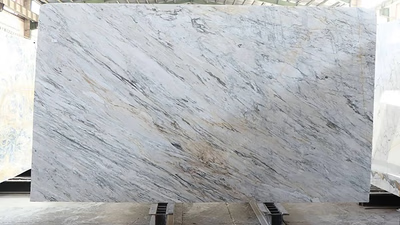
Crystal Marble, primarily white with crystal-like formations, is a highly sought-after stone in the Middle East. Its bright, translucent appearance makes it ideal for various applications, including countertops and wall cladding. The region boasts a diverse range of marbles, such as Carrara and Botticino, each with unique characteristics. Crystal Marble is classified as a metamorphic rock, primarily composed of calcite, and is known for its durability and aesthetic appeal. It is processed into slabs for use in both interior and exterior applications, thanks to its resistance to moisture and sunlight. The demand for this marble is high due to its ability to enhance space, making it appear larger. Pricing is influenced by factors such as extraction location and processing methods. Notably, Azna and Aligudarz porcelain are popular choices due to their variety and affordability.
The intricate veining and patterns found in Middle Eastern marbles add to their allure, making each piece unique. Skilled artisans in the region continue to uphold traditional quarrying and processing techniques, ensuring high-quality products. These marbles are not only used locally but are also exported globally, appealing to architects and designers for their beauty and versatility. Overall, the Middle East"s rich marble heritage and the availability of verified exporters and importers make it a key player in the global natural stone market."
-
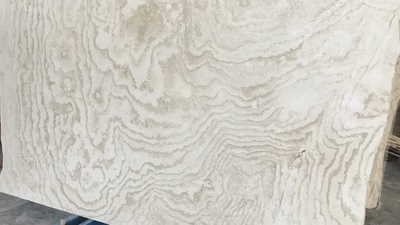
Travertine is a natural stone formed from limestone over thousands of years, characterized by its layered and porous structure. Predominantly found in West Asia, it features warm earthy tones such as beige, cream, and brown, making it a popular choice for both interior and exterior applications. Known for its durability, travertine resists cracking and chipping, making it ideal for flooring, wall cladding, and outdoor paving. Its historical significance, seen in ancient structures like the Roman Colosseum, adds to its timeless appeal. The Middle East and Italy are major suppliers of travertine, which is prized for its unique color variations and textures. The stone"s porosity provides excellent insulation for sound and heat, contributing to energy efficiency in buildings. With various finishes available, including polished and honed, travertine can suit diverse design preferences. Its environmentally friendly nature, coupled with low maintenance requirements, makes it a sustainable choice for construction. West Asian travertine is particularly noted for its light colors and unique patterns, enhancing its desirability in the market."
-
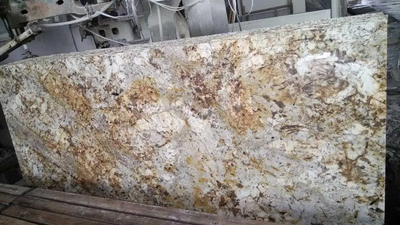
Granite, an igneous rock formed from molten magma, is prevalent in West Asia, known for its durability and strength. Composed mainly of quartz, feldspar, and mica, its composition varies by region and quarry, leading to diverse local varieties in color and pattern. Countries like Saudi Arabia, Iran, and Turkey are notable for their unique granite types. This stone is non-porous, resistant to scratching, heat, and staining, making it ideal for high-traffic areas and outdoor applications. Minimal maintenance is required, with regular cleaning sufficient to maintain its luster. Historically significant, granite has been used in ancient structures and monuments, enhancing its desirability. Its versatility allows for various applications, including kitchen countertops, flooring, and decorative features. The aesthetic appeal of West Asian granite, available in hues like white, gray, black, brown, and red, further contributes to its popularity among designers and builders.
With its high resistance to abrasion and chemical penetration, granite is a preferred choice for both interior and exterior uses, including facades of important buildings. The growing demand for granite in the Middle East highlights the importance of verified exporters and importers within the regional trade platform, facilitating B2B marketplace connections and supply chain solutions.
-

West Asian building stones are renowned for their durability and heat resistance, making them ideal for the region"s harsh climates. Their aesthetic appeal, characterized by vibrant colors and unique textures, enhances the visual quality of structures. These stones also provide safety features, such as slip resistance in outdoor applications, which is crucial for high-traffic areas. Additionally, certain stones offer natural insulation, promoting energy efficiency by regulating indoor temperatures. The processing of these stones involves techniques that enhance their resistance to heat, discoloration, and water penetration, ensuring longevity and ease of maintenance. Choosing the right stone is essential, as factors like water absorption and strength vary among types. Thicker stones are typically used for structural elements, while thinner varieties are suited for flooring and walls. The weight of the stones also plays a significant role in construction, as buildings must not exceed certain weight limits. Overall, the natural stones of West Asia are not only strong and resilient but also versatile, allowing for intricate designs and architectural features."
-

The Middle East is a significant player in the global natural stone market, being the fourth largest producer of building stones after Italy, China, and India. The region boasts a rich diversity of natural stones, including marble, granite, limestone, travertine, basalt, and sandstone, each with unique properties and applications. Marble is favored for its elegance and intricate patterns, while granite is valued for its durability and heat resistance. Limestone and travertine are commonly used for exterior cladding and flooring, with travertine"s porous nature making it ideal for outdoor use. The geological diversity of the Middle East contributes to a wide variety of decorative stones, particularly in Iran, which holds the largest reserves and offers a range of colors and qualities. The projected value of construction projects in the Gulf Arab states, Iran, and Iraq is estimated to exceed $697 billion over the next decade, indicating a substantial market for building stones. With an estimated 34.85 billion dollars per year allocated to building stone consumption, the region"s stone industry is poised for growth. The Middle East"s natural stone sector is supported by a robust network of mines, with thousands dedicated to decorative stones, ensuring a steady supply for both local and international markets. As the demand for high-quality building materials continues to rise, the Middle East"s trade platform for natural stones is becoming increasingly vital for B2B transactions and regional product listings.
-
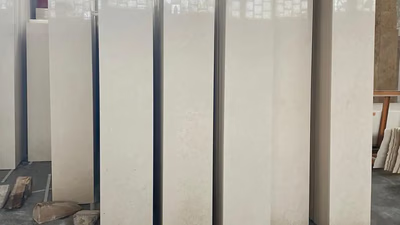
Limestone, primarily composed of calcium carbonate, is a versatile natural stone found in West Asia. It forms through the deposition of organic materials in marine environments, resulting in a variety of colors and textures. Commonly used in construction, limestone serves as an ideal material for flooring, wall cladding, and countertops due to its aesthetic appeal and durability. However, it is less hard than granite and may be susceptible to etching and staining. Proper care, including sealing and regular cleaning, is essential for maintaining its integrity. The Middle East"s limestone, particularly from local mines, is known for its light tones and affordability, making it a popular choice in architectural projects. Historical landmarks in the region, such as Petra and the Great Pyramids, showcase limestone"s enduring qualities. While quarrying limestone involves energy use, it is considered a sustainable option due to its natural formation and abundant availability. Overall, West Asian limestone remains a favored material in both contemporary and traditional architecture, reflecting its rich cultural heritage and practical benefits in construction.
-
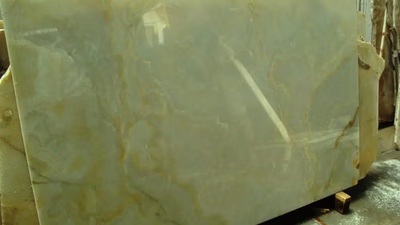
West Asia is renowned for its diverse marble varieties, including Carrara, Botticino, Emperador, and Crema Marfil, each showcasing unique colors and patterns. These marbles are highly valued for their aesthetic appeal, versatility, and historical significance in architecture, dating back thousands of years. They are commonly utilized in flooring, wall cladding, countertops, and decorative elements due to their durability and ability to be finished in various ways. The region"s marble craftsmanship is exceptional, with artisans creating intricate designs that enhance the beauty of the stones. West Asian marbles, such as Dehbid and Khoy, are durable and suitable for high-traffic areas, making them ideal for both residential and commercial applications. Their cultural significance is profound, often associated with luxury and architectural excellence, as seen in historical structures like the Taj Mahal. The unique properties of marble, including its resistance to heat, water, and scratches, further contribute to its desirability in modern design. With proper maintenance, West Asian marble can maintain its elegance and structural integrity for years, making it a timeless choice for various applications."
-
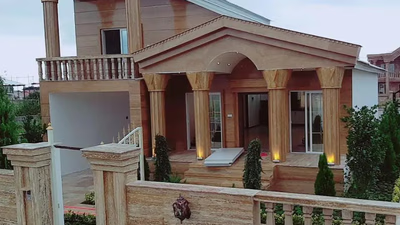
Natural stones are essential in construction, offering durability and aesthetic appeal for various applications. Commonly used stones include marble, granite, limestone, and travertine, which are favored for flooring due to their strength and diverse colors. They enhance building facades and interior walls, providing a sophisticated look and texture. In addition to flooring, natural stones are ideal for wall cladding, accent walls, and staircases, contributing to luxury in residential and commercial spaces. Their water resistance makes them suitable for bathrooms, while their heat resistance and durability make them popular for kitchen countertops and vanity tops. Outdoor applications include paving, landscaping, and decorative elements, showcasing their versatility. Natural stones are also used in architectural features, sculptures, and urban landscaping, blending functionality with beauty. Their historical significance is evident in ancient structures, emphasizing their timeless appeal. Overall, natural stones play a vital role in enhancing both interior and exterior spaces, offering a unique combination of durability, elegance, and versatility.








